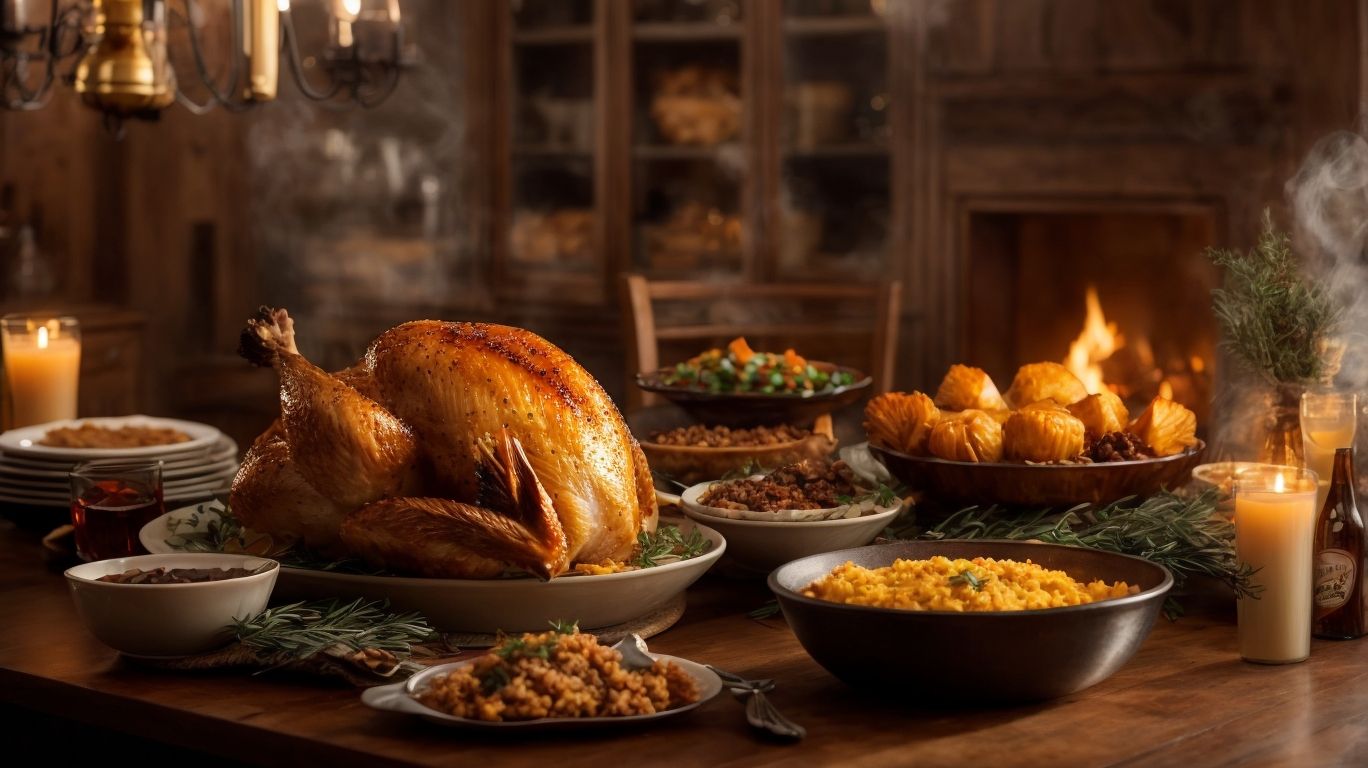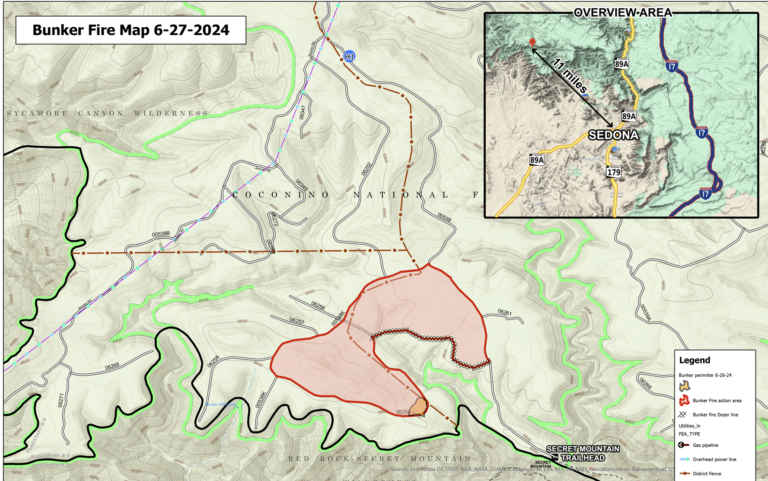Prevent Fires This Year During Thanksgiving – Are you planning on deep frying a turkey this Thanksgiving? Before you fire up the pot, it’s important to know about the potential safety concerns and precautions to take. According to the National Fire Protection Association, deep fryer fires result in an average of 5 deaths and 60 injuries each year in the US. Don’t let your holiday celebration turn into a disaster.
Stay informed and keep your family safe.
Why Is Deep-Fried Turkey a Fire Hazard?
Deep-fried turkey poses a significant fire hazard due to its cooking method. The large amount of hot oil used can easily ignite if not handled properly. It is important to follow safety precautions and use a deep fryer specifically designed for turkeys to prevent accidents. Remember, safety should always be the top priority when deep-frying a turkey.
In 2006, a deep-fried turkey mishap caused a fire in a Florida neighborhood. The incident occurred because the turkey was not properly thawed, resulting in excess moisture that caused the oil to overflow and ignite. The fire quickly spread to three nearby homes before firefighters were able to extinguish it. Fortunately, no one was injured, but this serves as a reminder of the importance of safe deep-frying practices.
What Are the Steps to Safely Deep Fry a Turkey?
Deep frying a turkey can be a delicious and exciting way to cook your Thanksgiving meal, but it can also be dangerous if not done properly. In this section, we will go through the essential steps for safely deep frying a turkey. From choosing the right location to using protective gear, we’ll cover everything you need to know to prevent any potential fires or injuries.
So, let’s get started and make sure your Thanksgiving feast stays delicious and disaster-free!
Choose the Right Location
When it comes to deep frying a turkey, selecting the appropriate location is crucial for safety:
- Choose an outdoor area that is far from any objects that can catch fire, such as trees or structures.
- Make sure the chosen area is flat and stable to avoid any tipping.
- Keep the fryer at least 10 feet away from your house or any materials that can catch fire.
- Avoid placing the fryer on wooden decks or near wooden structures.
- Clear the area of any debris or potential tripping hazards.
By following these steps, you can minimize the risk of accidents and ensure a safe and enjoyable experience while frying your turkey.
Thaw and Dry the Turkey
To safely deep fry a turkey, it is crucial to properly thaw and dry the turkey. Here is a step-by-step guide:
- Thaw the turkey in the refrigerator, allowing 24 hours per 4-5 pounds of turkey.
- Remove any packaging and pat the turkey dry with paper towels.
- Ensure there is no ice or water inside the turkey cavity.
- Place the turkey on a clean, flat surface and let it air dry for about 30 minutes to an hour.
- Make sure the skin is completely dry before placing it in the fryer to prevent oil splatters and flare-ups.
Thawing and drying the turkey is crucial to achieve a crispy and evenly-cooked turkey when deep frying.
Measure the Oil Carefully
When deep-frying a turkey, it is crucial to measure the oil carefully to ensure safety and prevent accidents. Follow these steps to properly measure the oil:
- Choose an appropriate fryer and pot size that will allow for the correct amount of oil.
- Place the turkey in the empty pot and fill it with water until the turkey is fully submerged.
- Remove the turkey and mark the water level; this will indicate the required amount of oil.
- Drain the pot and dry it thoroughly before adding the measured oil.
- Make sure the turkey is completely dry before slowly lowering it into the oil.
- Monitor the oil temperature and maintain it according to the instructions in the recipe.
By carefully measuring the oil, you can avoid oil overflow and reduce the risk of fire hazards when deep-frying a turkey.
Lower the Turkey Slowly
When deep frying a turkey, it is important to lower the turkey slowly into the hot oil to prevent dangerous splashing and potential fires. To ensure a safe frying process, follow these steps:
- Prepare the turkey by patting it dry and removing any excess moisture.
- Slowly lower the turkey into the preheated oil, using a sturdy tool like a turkey lifter or metal hook.
- Be cautious and avoid dropping the turkey into the oil, as this can cause oil to splatter and increase the risk of burns or fires.
- Lower the turkey gradually to maintain control and minimize the chances of hot oil splashing.
Fun Fact: Deep-frying a turkey can result in deliciously crispy skin while keeping the meat moist and flavorful.
Monitor the Temperature
To ensure the safety of deep frying a turkey, it is important to monitor the temperature by following these steps:
- Use a reliable thermometer to accurately measure the oil temperature.
- Ensure the oil stays between 325°F and 375°F throughout the frying process.
- Adjust the heat source as needed to maintain a consistent temperature.
- Periodically check the thermometer to monitor any fluctuations.
- Continuously monitor the temperature to prevent overheating and potential fire hazards.
Use Protective Gear
When deep frying a turkey, it is crucial to prioritize safety by using protective gear. Here are the steps to follow:
- Wear heat-resistant gloves to protect your hands from burns.
- Use safety goggles to shield your eyes from splattering hot oil.
- Wear a long-sleeved shirt and pants to cover exposed skin.
- Use sturdy, closed-toe shoes to protect your feet.
- Remember to use protective gear to reduce the risk of injury while deep frying a turkey.
Fact: Wearing protective gear is essential for ensuring your safety and preventing accidents.
What Are Some Common Mistakes to Avoid When Deep Frying a Turkey?
Deep frying a turkey has become a popular way to cook a Thanksgiving feast, but it can also be dangerous if not done properly. In this section, we will discuss the most common mistakes to avoid when deep frying a turkey.
These include overfilling the fryer, using a turkey that has not been properly thawed, not monitoring the temperature, and using too much oil. By understanding these potential pitfalls, you can ensure a safe and delicious Thanksgiving dinner for all.
Overfilling the Fryer
Overfilling the fryer when deep frying a turkey can lead to dangerous situations and accidents. To prevent this, follow these steps:
- Choose a fryer that is the appropriate size for your turkey.
- Thaw the turkey completely to remove any ice or moisture that may cause splattering.
- Measure the correct amount of oil needed based on the size of the turkey and the capacity of the fryer.
- Carefully lower the turkey into the fryer, making sure it is fully submerged and there is enough space for the oil to expand.
- Monitor the oil’s temperature closely throughout the frying process.
- Wear protective gear, such as gloves and goggles, to prevent accidents or injuries.
Using an Improperly Thawed Turkey
When deep frying a turkey, it is important to properly thaw it to avoid safety hazards and unsatisfactory cooking results. To ensure a safe and delicious deep-frying experience, follow these steps:
- Thaw the turkey in the refrigerator, allowing 24 hours for every 4-5 pounds of turkey.
- Ensure that the turkey is fully thawed before frying, as using an improperly thawed turkey can cause sudden splattering and uneven cooking.
- Remove any packaging materials or ice crystals from the turkey.
- Pat the turkey dry with paper towels to remove excess moisture, which can lead to oil splattering.
- Inspect the turkey to make sure there are no ice pockets or frozen areas inside the cavity.
- Allow the turkey to come to room temperature before frying to promote even cooking.
By following these steps and using a properly thawed turkey, you can avoid any potential hazards and ensure a delicious deep-frying experience.
Not Monitoring the Temperature
One common mistake to avoid when deep frying a turkey is not properly monitoring the temperature. This can result in dangerous situations such as overheating or even fires. To ensure the safe cooking of a deep-fried turkey, follow these steps:
- Use a reliable thermometer to monitor the temperature of the oil throughout the cooking process.
- Check the temperature frequently, especially during the initial heating phase, and adjust the heat source if needed.
- Maintain a consistent temperature range, typically around 325°F (163°C) for even cooking and to prevent the oil from smoking or catching fire.
- Be cautious of sudden temperature drops when adding the turkey, as this can cause the oil to bubble and overflow.
- Avoid leaving the fryer unattended, and have a fire extinguisher nearby in case of emergencies.
True story: A family’s Thanksgiving gathering was disrupted when they failed to monitor the temperature while deep frying a turkey. The oil overheated and caught fire, resulting in significant damage to their property. Luckily, they had a fire extinguisher on hand and were able to extinguish the flames before they spread further.
Using Too Much Oil
Using too much oil when deep frying a turkey can lead to dangerous situations. To avoid this, follow these steps:
- Calculate the amount of oil needed by placing the turkey in the fryer and filling it with water until the turkey is covered.
- Mark the water level and remove the turkey. Dry it completely before frying.
- Pour oil into the fryer up to the marked level. Avoid overfilling.
- Heat the oil to the recommended temperature and carefully lower the turkey into the fryer.
- Monitor the temperature throughout the cooking process to prevent overheating and oil splattering.
- Use protective gear like oven mitts and safety goggles.
In a cautionary tale, a family in Ohio used too much oil and caused a fire that destroyed their deck. Remember to always use the appropriate amount of oil to ensure a safe and enjoyable cooking experience.
What Are Some Alternative Cooking Methods for Turkey?
While deep frying a turkey has become a popular cooking method for Thanksgiving, it can also be a potential fire hazard if not done properly. If you are looking for a safer alternative to fry your turkey, there are several other cooking methods to consider. In this section, we will discuss four alternative ways to cook your Thanksgiving turkey, including roasting, grilling, smoking, and using an electric fryer. Each method offers its own unique benefits and can be a great option for a delicious and safe holiday meal.
Roasting
Roasting is a popular alternative cooking method for turkey, offering a delicious and juicy result. Here are the steps to roast a turkey:
- Preheat the oven to the recommended temperature.
- Prepare the turkey by cleaning and patting it dry.
- Season the turkey with herbs, spices, and butter or oil.
- Place the turkey on a roasting rack in a roasting pan.
- Insert a meat thermometer into the thickest part of the turkey’s thigh.
- Roast the turkey according to the recommended cooking time based on its weight.
- Baste the turkey with its own juices or additional broth or butter during cooking.
- Check the internal temperature with the thermometer to ensure it reaches the safe temperature.
- Let the turkey rest for a few minutes before carving and serving.
Roasting is a straightforward and traditional method that yields a beautiful centerpiece for your holiday meal.
Grilling
Grilling is a popular alternative cooking method for turkey that offers a unique flavor and crispy texture. To grill a turkey safely and deliciously, follow these steps:
- Prepare the grill and preheat to medium-high heat.
- Clean and season the turkey with your preferred marinade or dry rub.
- Place the turkey on the preheated grill, breast side up.
- Cook the turkey using indirect heat, keeping the grill lid closed.
- Monitor the internal temperature of the turkey using a meat thermometer.
- Once the turkey reaches a safe internal temperature, remove it from the grill and let it rest before carving.
Last Thanksgiving, my family decided to try grilling a turkey for the first time. We followed the steps above and were amazed by the juicy and flavorful results. The smoky char from the grill added an extra depth of flavor that we all loved. It was a memorable and delicious twist on our traditional Thanksgiving meal.
Smoking
Smoking is a popular alternative cooking method for turkey that adds a unique flavor. Here are the steps to smoke a turkey:
- Prepare the smoker by preheating it to the desired temperature (usually around 225-250°F).
- Season the turkey with your preferred rub or marinade.
- Place the turkey on the smoker rack and close the lid.
- Monitor the temperature inside the smoker and adjust vents accordingly to maintain a consistent temperature.
- Smoke the turkey for a few hours, depending on its size, until it reaches the recommended internal temperature of 165°F.
- Remove the turkey from the smoker and let it rest before carving and serving.
Remember to follow proper safety precautions and check your smoker manufacturer’s instructions. Smoking can be a flavorful and enjoyable way to cook a turkey, adding depth to your Thanksgiving feast.
Using an Electric Fryer
When it comes to deep frying a turkey, using an electric fryer is a safe and convenient option. Here are the steps to follow:
- Place the electric fryer on a sturdy, level surface away from any flammable materials.
- Make sure the turkey is completely thawed and pat it dry to prevent oil splattering.
- Fill the fryer with the recommended amount of oil, which is usually indicated on the fryer or in the instruction manual.
- Gently lower the turkey into the fryer, ensuring that it is fully submerged.
- Follow the fryer’s instructions to set the temperature and monitor it closely while cooking.
- Use protective gear, such as oven mitts and goggles, to protect yourself from hot oil.
Using an electric fryer eliminates the risk of open flames and provides consistent temperature control. Always remember to follow the manufacturer’s instructions for your specific fryer.
Frequently Asked Questions
What is the best way to prevent fires when deep frying a turkey this Thanksgiving?
To prevent fires when deep frying a turkey, it is important to follow safety measures and closely monitor the fryer. Ensure that the fryer is placed on a flat, stable surface and never leave it unattended. Keep a fire extinguisher nearby and avoid overfilling the fryer with oil.
Are there any specific safety precautions to keep in mind while using a turkey fryer?
Yes, it is important to carefully read and follow the instructions provided by the manufacturer. Always use the fryer outdoors and away from any flammable materials. Make sure to wear protective gear such as oven mitts and safety goggles while using the fryer.
Can I use a deep fryer to cook a frozen turkey?
No, it is not safe to deep fry a frozen turkey. The frozen turkey can cause the hot oil to splatter and lead to a fire. It is important to always thaw the turkey completely before placing it in the fryer.
How can I tell if the oil in the fryer is at the right temperature?
Most turkey fryers come with a built-in thermometer, but if yours does not, you can use a candy thermometer to check the temperature. The oil should be heated to 375°F before carefully lowering the turkey into the fryer.
What should I do if a fire does break out while deep frying a turkey?
If a fire breaks out, immediately turn off the fryer and cover it with a metal lid or fire blanket. Do not use water to extinguish the fire as it can cause the oil to splatter and spread the fire. Use a fire extinguisher or call 911 for help.
Are there any alternatives to deep frying a turkey?
Yes, there are several alternatives to deep frying a turkey, such as roasting, grilling, or smoking. These methods may take longer, but they are safer and can still result in a delicious turkey for your Thanksgiving meal.







